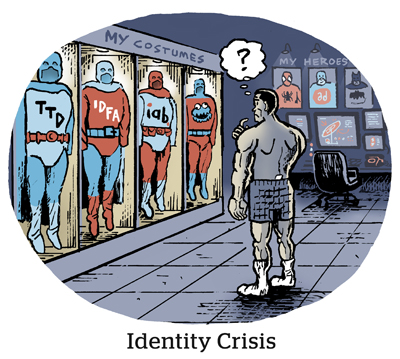 On-device is so in.
On-device is so in.
On Friday, the mobile ad tech business Verve Group launched an in-app targeting product for Apple devices that uses on-device data to aggregate cohorts of users rather than targeting individuals.
The product, dubbed ATOM (Anonymous Targeting on Mobile), collects data from the device and the app when it’s in use, but strips out the identifiers.
For instance, Verve’s SDK can pull information about the time of day, the device type and operating system, whether the device is in dark mode and even accelerometer data that shows if the person is moving. There’s also the contextual data on the specific app. If it’s a gaming app, is the player winning or losing? If it’s a news app, what is the user reading?
These data points don’t identify an individual but can probabilistically organize users into segments or cohorts that are useful to advertisers, such as groups made up primarily of men or women or people in certain age ranges, said Ionut Ciobotaru, Verve Group’s chief product officer.
During the testing phase, ATOM cohorts consisted of between 50 and 200 users, Ciobotaru said. As publisher adoption picks up, the plan is to have cohorts with thousands of users.
There is a margin of error for ATOM segment, though. A cohort for “women,” say, may be just three-fourths women.
And that’s because someone who regularly opens the Sephora app or has a period tracker on their phone is likely a woman, but it’s not possible to say that with 100% certainty.
The question is, are advertisers interested in “likely?”
“It’s not a guarantee,” Ciobotaru said. “But, right now, advertisers are blind in iOS – and in the world of the blind the one-eyed man is king.”Advertisers weren’t interested in such probabilistic (i.e., inexact) mobile targeting until recently, he said. But since Apple’s IDFA update for iOS 14, buyers are more open to trying targeting solutions that use audience cohorts and on-device data – two things Apple has said are kosher for data-driven advertising.
For iOS device owners who don’t opt into tracking, CPMs are down by almost half since the IDFA change, said Mike Brooks, SVP of revenue of weather app WeatherBug, a potential partner for the Verve targeting product. He estimates that between $6 billion and $12 billion of in-app ad spend must now be reallocated using alternative data-driven targeting or attribution methods – or be lost entirely for the app ecosystem.
For WeatherBug app, the ATOM product could help recoup some of the iOS monetization losses and stabilize CPMs by placing its users into valuable segments, Brooks said.
People who regularly check the weather around lunch time, for example, might be of interest to food delivery and ordering services. Other advertisers might want to target women during a morning commute.
It might not sound like a major change to shift from cloud-based audience targeting to on-device audience data. “But it’s changing where mobile ad tech lives from ad servers and the cloud to publishers, SSPs and SDKs,” Brooks said.
On-device data will require extensive testing before advertisers and publishers are familiar with the new mobile advertising paradigm, he said. Even most ad tech vendors aren’t prepared for the change.
But the release of iOS 14.5 has lit a fire.
“There hasn‘t been much development for on-device and anonymized targeting,” Brooks said. “Until two weeks ago, this problem was only theoretical.”














